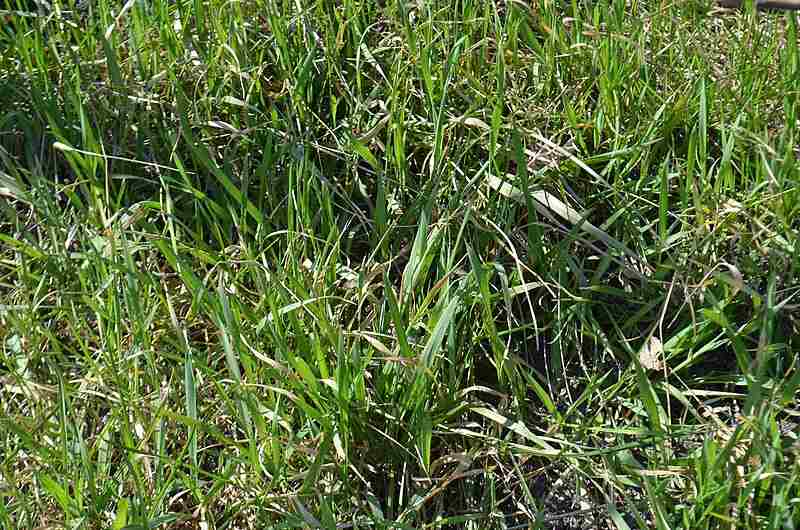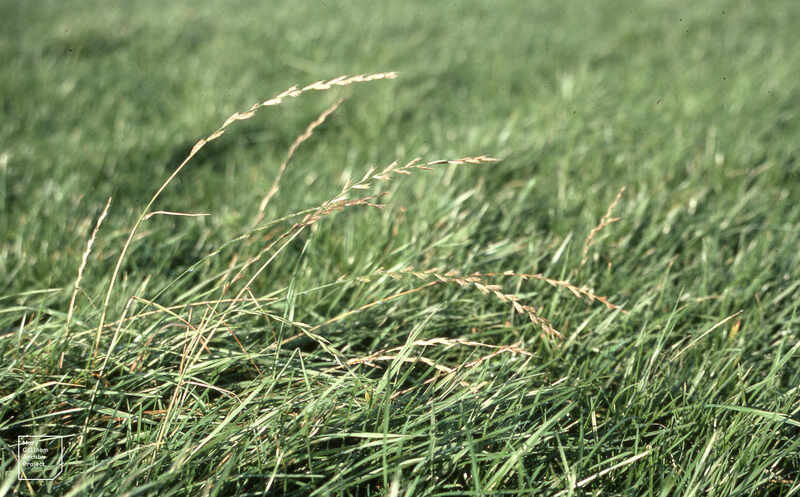4 Best Grass Types for Cincinnati, OH
BY MICHELLE SELZER | MAY 4TH, 2021 | CINCINNATI, LAWN CARE, OHIOCincinnati is known for its hilly terrain, abundant breweries, and world-class chili. However, when not at Skyline Chilli or Rhinegeist Brewery, many locals enjoy spending time outdoors. Picking the perfect grass for your Cincy home will beautify your yard and improve your outdoor living experience. For example, if you enjoy playing soccer, you should choose a grass variety that tolerates heavy foot traffic.
We researched and compiled a list of the best Cincinnati grass types. We break down each variety and explain its strengths and weaknesses. As a result, this guide empowers you to choose the best grass for your Cincinnati home.
In this article:
4 Cool-Season Grasses for Cincinnati
Most Cincinnati locals prefer cool-season grass because it can survive and flourish through long winters. Cool-season grasses grow best in the fall and spring and may go dormant in July and August, especially during dry spells. In addition, they usually go dormant in the winter once the soil is colder than 45 degrees Fahrenheit.
1. Kentucky Bluegrass

Kentucky Bluegrass
Photo Credit: Ethan2039 / Wikimedia Commons / CC BY-SA 4.0
The majority of lawns throughout Cincinnati have Kentucky bluegrass. It’s the most popular lawn grass in the United States and boasts the highest cold tolerance of all cool-season grasses. Homeowners love its lush appearance and appreciate how quickly it recovers after distress. In fact, the Great American Ballpark even uses a Kentucky bluegrass blend.
Unfortunately, Kentucky bluegrass is also high maintenance. It prefers well-drained soil, but Cincinnati’s soil contains a lot of clay, so it doesn’t always drain well. However, aerating your lawn will improve drainage and help you maintain healthy turf. Additionally, Kentucky bluegrass requires lots of water, sunshine, dethatching, and fertilizer.
Classification: Cool-season grass
Spreads by: Rhizomes
Shade tolerance: Low
Drought tolerance: Moderate
Foot traffic tolerance: Moderate
Maintenance needs: Moderate mowing frequency and high fertilization needs.
Mowing height: Set mowing height between 2.5 and 3.5 inches.
Potential for disease: Moderate to high; prone to several diseases, such as dollar spot, leaf spot, necrotic ring spot, summer patch, and stripe smut.
Soil pH: 6-7.5
Soil type: Performs best in well-drained, heavy soils with high fertility.
Other notes: During the summer it needs about 2 to 3 inches of water per week. Be sure to fertilize in the fall and as needed throughout the year.
2. Perennial Ryegrass

Perennial Ryegrass
Photo Credit: Dr Mary Gillham Archive Project / Flickr / CC BY 2.0
Another popular turfgrass is perennial ryegrass. Its color and texture resemble Kentucky bluegrass, but it takes less time to establish and can handle heavier foot traffic. So, it is often used to overseed recreational turf.
Perennial ryegrass loves sunshine but many cultivars can tolerate partial shade. It prefers loamy soils that are well-drained and fertile, so be sure to aerate and fertilize. However, you probably won’t have to worry about dethatching because perennial ryegrass doesn’t develop significant thatch.
Classification: Cool-season grass
Spreads by: Has a bunch-type growth habit
Shade tolerance: Low
Drought tolerance: Low
Foot traffic tolerance: High
Maintenance needs: Moderate mowing and fertilization requirements. Thatch is not significant.
Mowing height: Set mowing height to 1.5 to 2.5 inches
Potential for disease: High. Common diseases include gray leaf spot, red thread, and leaf spot/melting-out.
Soil pH: Can grow in soils with a pH between 5 and 8, but prefers between 6 and 7.
Soil type: Prefers good drainage and fertility, but can tolerate some poor drainage.
Other notes: Although it goes dormant in the summer, you should still water the lawn.
3. Fine Fescue
Cincinnati homeowners who want a low-maintenance lawn with fine blades choose fine fescues, such as creeping red and chewing fescue. Fine fescue doesn’t require a lot of fertilizer, water, or mowing and thrives in cool and humid climates. However, it prefers well-drained soil so be sure to aerate. Although some residents have a pure fescue lawn, many homeowners prefer fine fescue blends.
If you have a lot of trees in your yard, consider fine fescue, because it is the most shade tolerant cool-season grass. However, it isn’t suitable for sports or keg parties because fine fescue doesn’t like heavy foot traffic.
Classification: Cool-season grass
Spreads by: Creeping red fescue spreads by rhizomes, while other fine fescues are bunch-type grasses, such as chewing, hard, and sheep fescues.
Shade tolerance: Moderate to High, depending on species
Drought tolerance: Moderate to High, depending on species
Foot traffic tolerance: Low to Moderate, depending on species
Maintenance needs: Low fertilizer and mowing needs.
Mowing height: Set mowing height between 2.5 and 4.0 inches, depending on species.
Potential for disease: Moderate. Common diseases include red thread, leaf spot, dollar spot, summer patch, and powdery mildew.
Soil pH: 6-6.5
Soil type: Will not perform well in wet soil conditions. Prefers drier soils and tolerates a wide range of soil types and fertility.
Other notes: You may need to dethatch the lawn every couple of years.
4. Tall Fescue
Another low-maintenance turfgrass is tall fescue. Its coarse deep green blades don’t require a lot of fertilizer or water but require more mowing than fine fescue. And although tall fescue prefers cool temperatures, it is the most heat-tolerant cool-season grass, so it will survive a summer heat wave.
However, tall fescue is intolerant to foot traffic and slowly recovers when damaged. Although it isn’t recommended for outdoor sports or doggy playgrounds, some modern cultivars are better suited to handle foot traffic.
Classification: Cool-season grass
Spreads by: Produces short rhizomes but has a bunch-type growth habit
Shade tolerance: Moderate
Drought tolerance: Moderate to High
Foot traffic tolerance: Moderate
Maintenance needs: Frequent mowing. Does not produce significant thatch.
Mowing height: Set mowing height to 2 inches when grass reaches 3 inches tall.
Potential for disease: Tolerant of most diseases when properly maintained.
Soil pH: 5.5-6.5
Soil type: Adapted to a wide range of soil conditions, but prefers fertile clay soils with good drainage.
Other notes: Tall fescue is susceptible to a fungus called Acremonium coenophialum, which harms horses.
FAQ About Cincinnati Grass Types
Yes, although it is easier for cool-season grass to thrive in Cincinnati. Some Cincinnatians prefer cold-tolerant warm-season grasses, such as:
● Zoysia japonica
● Pensacola bahiagrass
● Yukon Bermudagrass
Aeration is part of Cincinnati’s fall lawn care checklist and the best months to aerate are September and October. Because the local soil contains a lot of clay, you must aerate to ensure proper soil drainage and prevent the soil from becoming compacted.
The best time to overseed your Cincy lawn is early Fall, within 48 hours of aerating. This is also a good time to apply fertilizer.
Spring lawn care in Cincinnati includes the following:
● Raking and removing debris: When the snow melts, wet yard waste traps moisture in your lawn, making it susceptible to snow mold.
● Resume mowing: Once the grass is about 2 inches tall, it is time to resume regular mowing. Never mow more than one-third of the grass’s height, and follow cutting guidelines for your turf species.
● Pre-emergent herbicides: Weeds tend to sprout in the spring.
● Pest control: Many of Cincinnati’s yard pests surface in the spring.
Choosing Plant and Grass Varieties for Your Cincinnati Landscape
When selecting vegetation for your Cincinnati home, consider the following:
- Soil type: The easiest (and cheapest) way to have a fruitful harvest is to grow plants that thrive in the soil that mother nature provides. Most Cincinnati residents have clay loam soil.
- Climate: Choose plants that thrive in warm summers and frigid winters. Cincinnati is in USDA hardiness zone 6.
- Sun exposure: Consider the sunshine available to your grass and plants when planning a garden. If you have many trees, select shade-tolerant species.
- Lifestyle: What do you do in your yard? For example, if you play sports, you should pick grass that handles heavy foot traffic. In addition, Cincinnati homeowners usually avoid poisonous plants if they have young children or pets.
- Landscape design: Are you going for a particular mood or theme? Landscape design principles help designers select plants using complimentary colors, textures, and propositions.
- Native plants: Cincinnati’s native plants are low-maintenance and great for the ecosystem.
The best way to maintain a lush lawn free of weeds, pests, and diseases is to hire a lawn care pro in Cincinnati. In addition to maintaining your property, landscaping professionals can help you maintain an alluring landscape that thrives in Cincy’s soil.
Main Photo Credit: David Ohmer / Flickr / CC BY 2.0